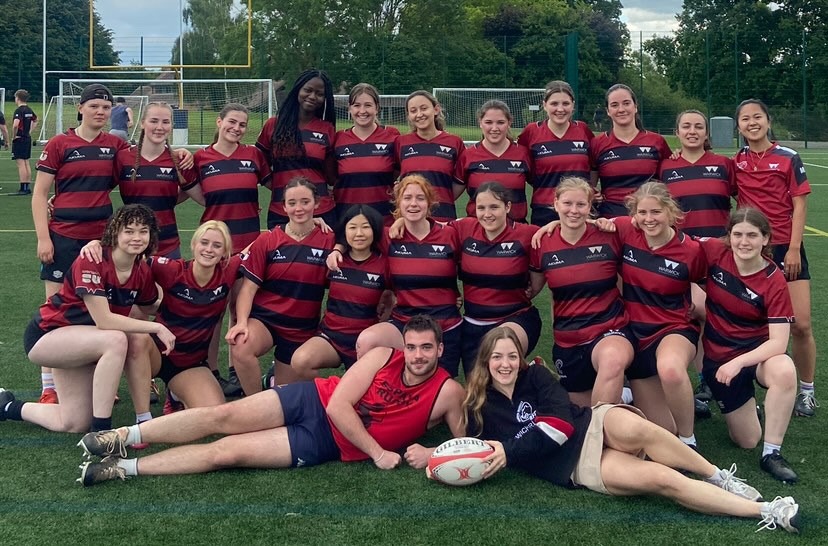Russian dolls, Barbie dolls: The women fuelling rugby’s growth
On Sunday 12 October, I was one of 18,154 fans in attendance at the Hill Dickinson Stadium as Everton welcomed Manchester United in the Women’s Super League – the very first time Everton’s women had played at the all-new venue.
This latest achievement is testament to those female players past and present who have helped turn the game into the phenomenon it is today.
Women’s rugby may have taken a little longer to reach these heights, but there is no denying its current trajectory. A full house of 81,885 attended the Women’s Rugby World Cup final at Twickenham in September, as hosts England defeated Canada to claim their third world title.
It is scarcely imaginable what the women’s game has achieved in such a short space of time
Like their footballing counterparts, rugby-playing women and girls have never had it easy in a sport that for so long was deemed fundamentally ‘masculine’.
Britain has been home to some form of women’s rugby since at least the late nineteenth century, but pressure from the often-disgraced public and rugby authorities (headed by men) would always scupper hopes of organised competition.
Breakthroughs were made in British universities during the 1960s, but it was in France where the first-ever organised, fully documented women’s club match was played in 1968.
By the time of the inaugural Women’s Rugby World Cup, held in Cardiff in 1991, the game had been formally organised in multiple countries across the globe.
That tournament, though, only emphasised just how far the game still had to go.
After the sport’s global governing body, the International Rugby Board, refused to sanction the women’s competition, the twelve competing teams had to fund their own transport, food, and accommodation – the Soviets tried doing so by selling vodka and Russian dolls, until their efforts were curtailed by HM Customs and Excise.
Teams couldn’t even wear the same logos as the men’s teams in fear of facing a copyright lawsuit, an injunction that wasn’t lifted for England’s women for another eighteen years.
Rugby’s women have emerged from the shadow of their male counterparts to be the very face of the game’s global development
Given the disgraceful handling of that inaugural tournament, it is scarcely imaginable what the women’s game has achieved in such a short space of time.
Through sheer grit and never taking no for an answer in the face of injustice and inequality, rugby’s women have emerged from the shadow of their male counterparts to be the very face of the game’s global development.
England’s Red Roses now boast sponsorship deals with globally recognised brands like Clinique and Mattel, the latter launching a new line of Barbie-branded clothing and merchandise.
Mattel have even transformed four international stars, including United States centre Ilona Maher, into Barbie dolls themselves, amid their efforts to celebrate athletic female builds and promote body positivity among young girls.
Well-known for her advocacy of body positivity herself, Maher is the world’s most followed rugby player, male or female, on social media.
Warwick Women’s RFC have reported a “25% increase” in the number of members since the World Cup
Through her huge platform, the 29-year-old is introducing the game to millions of young girls around the world – and she is not alone with national governing bodies finally taking responsibility for the game’s growth, too.
The Rugby Football Union’s ‘Every Rose’ strategy, initially launched in 2021, promised groundbreaking funding for grassroots clubs and schools in hopes of doubling female participation in the sport in England. With over 40,000 registered women already playing grassroots rugby in England, a new five-year plan, devised to capitalise on the World Cup triumph, aims to “grow participation to 100,000 active players” and double annual revenue “to help fuel the game’s future”.
In terms of University sport, Warwick Women’s RFC have reported a “25% increase” in the number of members since the World Cup, and have also noticed players “picking things up really quickly” due to “increased visibility, conversation, and publicity” which are all making a huge difference for the women’s game.
Of course, much more must be done. Future development is being hindered by a lack of professionalisation, with many players still working full-time jobs alongside their rugby careers.
Women’s teams also tend to operate with fewer medical or coaching resources than the men do. Any medical support that does exist is still heavily tailored towards the men’s game and male bodies.
But, as we have seen with women’s football, the only way is up. In a world where women are still told to look and behave in a certain way, rugby’s appreciation of all body shapes and sizes is fuelling the explosion of the women’s game.

Comments